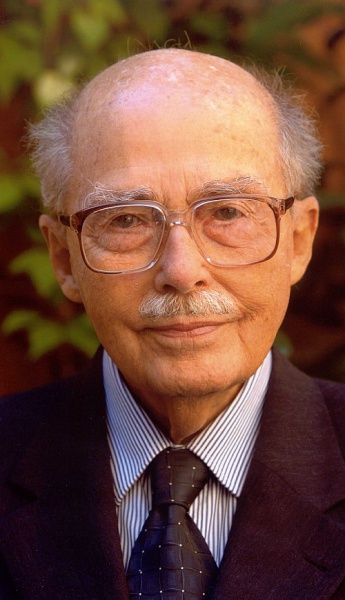Archduke Otto was born in Reichenau (Lower Austria) on 20th November 1912 as the oldest son of Archduke Carl of Austria (later Emperor Karl I. of Austria, King of Hungary, Bohemia, Croatia etc.) and of Princess Zita de Bourbon-Parma (later Empress and Queen). From 1916 on he was the Crown Prince of Austria-Hungary.
Until the end of the first world war, 1918, he lived in Austria-Hungary. After that, because of the special anti-Habsburg laws, in exile in Switzerland, on Madeira, at Lequeitio (Spain), at Steenockerzeel (Belgium), in Paris, and from 1940 to 1944 in Washington D.C. (USA). 1944 he returned to Europe, lived in France and since 1954 in Pöcking (Bavaria). A return to Austria became only possible, after a law-dispute of many years, in 1966 by a judgement of the Administration Court of Justice.
Studies: Otto von Habsburg finished his high school studies in Spain on the basis of the Austrian and the Hungarian school programme. Studies of political and social sciences at the University in Louvain (Belgium), finishing it with a doctorate in 1935.
Scientific and publishing activities: Otto von Habsburg published 35 books in nine languages on historical, social and political topics and particularly on European politics. Also numerous contributions to books, periodicals and newspapers. Since 1953 a weekly chronicle regarding present events appears from him in many daily papers in several languages.
Political activities : In the 1930-ies Otto von Habsburg openly objected National-Socialism and opposed in March 1938 the annexation "Anschluss” of Austria by the German Reich. The Nazis pursued him with a warrant for his arrest. At the outbreak of the war he helped more than ten thousand NS-persecuted people, mainly Jews, to escape overseas. During the Second World War he worked in the USA for the restoration of Austria, the self-determination of Southern Tirol and against the expulsion of the Germans from the Sudeten area and from the German Eastern regions. After the war he was again expelled from Austria at the pressure of the Soviet occupation forces.
Since 1936 Otto von Habsburg was a member of the Richard Coudenhove-Kalergi founded Paneuropean Union, and since 1957 its International Vice-President. After the death of the founder he took over in 1973 as International President the direction of the Paneuropean Union. He developped the organization into a mass-movement for a free, Christian, social and united Europe and made it into the advocate for the people of Central- and Eastern-Europe suppressed by communist regimes.
Otto von Habsburg became a Member of the European Parliament at its first direct election on 10th June 1979. There he was until July 1999 Chairman of the Christian-Democratic EVP-Faction in the Committee on Foreign Affairs, President and Vice-President of the Hungarian Delegation and also active as the Parliament’s Age-Doyen. The putting up of an "empty seat" for the oppressed people of Europe, the re-discovery of the term "Central Europe" (Mitteleuropa), the development of common foreign and security politics and the opening possibility for the countries of Central- and Eastern-Europe to join the European Union, carry his handwriting.
Since 1989 he worked for the extension of the Paneuropean Union into the countries behind the "Iron Curtain”, for the independence of the Baltic States from Moscow, and of Croatia, Slovenia, Bosnia-Hercegovina and Macedonia from Belgrade. On 19th August 1989 he was the Patron of the "Paneuropean-Picnic” in Sopron, at which nearly 700 Germans from the GDR dared to make the first great mass-escape.
After leaving the Euriopean Parliament in 1999 Otto von Habsburg continued with his political work as an internationally active speaker as well as helping a number of Central and Eastern European governments. His political commentaries appeared in different newspapers over the whole continent.
After the death of his wife in February 2010 Otto von Habsburg withdrew from public life and lived at his residence in Pöcking (Bavaria).


